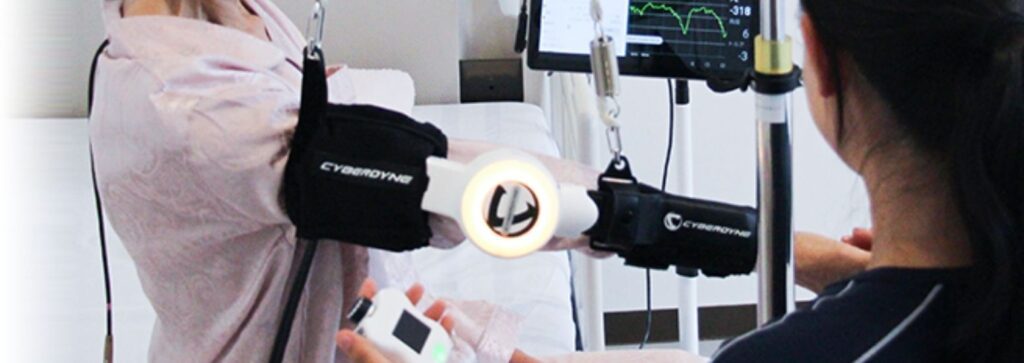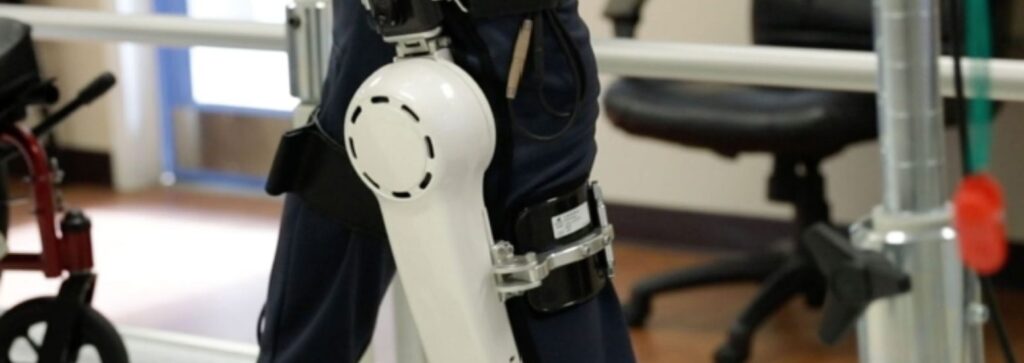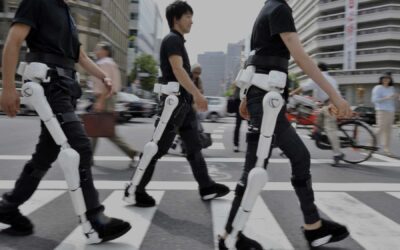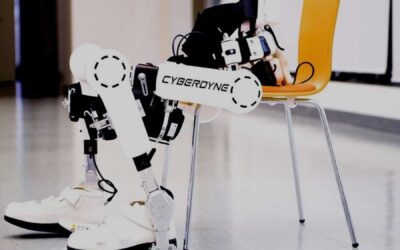Japan’s Cyberdyne HAL® introduces a neurologically controlled robotic suit to aid patients with paralysis. HAL®, Cyberdyne’s Hybrid Assistive Limb, enhances the ability to walk in individuals with spinal cord injuries resulting in paralysis. This neurorehabilitation device assists patients in moving their paralysed legs based on their intentions, without dictating movements on its own.
The Wearable Cyborg™ HAL
HAL® operates based on the wearer’s motor intention and internal ideal movement patterns, effectively becoming a part of the body. Even when the muscles are barely functional, the device’s movement activates sensory receptors like those in muscle spindle fibres, providing real-time sensory information to the brain.
HAL Plans for Paralysis Treatment

The brain initially produces command signals. Following that, the muscles receive the command signals produced by the brain. When a person’s body is in motion, they first think about the movements in their brain. By thinking “I want to walk,” our brain directs the necessary signals to the muscles required for the movement through nerves.
Signal Transmission
In a healthy body, every muscle can receive signals from the brain and move as effectively and quickly as intended. In the case of HAL, this is accomplished with the assistance of technology that stimulates the nervous system.
Signal Reception
The signals sent to the muscles by the brain emit as faint signals on the skin surface, known as “bio-electric signals.” HAL® can detect BES by attaching specially developed sensors to the wearer’s skin surface. By consolidating various data, HAL understands the type of movements the patient intends to make.
Signal Perception
Human thinking speed, muscle control, and joint movement are extremely rapid. HAL, like humans, can instantly process various information. When the body starts moving, HAL moves as well. Consequently, HAL® can aid the wearer’s movements.
Feedback
The process of moving the human body does not stop with muscle movement alone. The brain verifies how the body would have moved and the type of signal used. When HAL® effectively assists walking movements, the feeling of “I could walk!” is relayed back to the brain. This is how the brain can gradually learn to produce the necessary signals for “walking.” This marks “the crucial first step” in enabling physically challenged individuals to walk without assistance from HAL®. HAL® is the only robot that can provide appropriate solutions for the motions of the brain.
Recovery by Cyberdyne HAL

Cyberdyne’s Hybrid Assisted Limb is capable of assisting even the most inactive patients, thereby enhancing their quality of life. Through the use of a neurologically controlled cyborg HAL®, locomotor training enables specific neural activity and repetitive task-oriented exercises. The Wearable Cyborg™ HAL facilitates learning and contributes to the reorganisation of the appropriate proprioceptive feedback loop. HAL is specifically designed to create a pathway for muscle-activated signals, resulting in meaningful movement responses.
For a free demo, connect with Cyberdyne at https://rehabmodalities.com/



